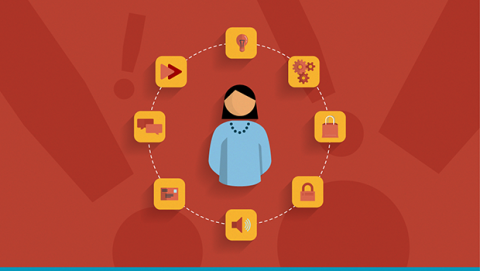The movement to mobile devices brought marketers a lot of new ways to connect with customers, but that was so yesterday. We’re now in the era of conversational commerce and on the way toward mind-to-mind communications, where marketers will almost literally be inside your head.
Behind it all, of course, is a heavy dose of IT and forward-thinking executives such as Jason Alan Snyder, CTO of the creative agency Momentum Worldwide. Part of McCann Worldgroup, Momentum is focused on brand experience marketing, meaning the experience consumers have when interacting with a brand in person, such as at concerts, sporting events or, in the case of consumer goods, inside a supermarket.
“We create virtual reality experiences, augmented reality, blended reality — heavy tech-driven stuff,” Snyder says. “A lot of what we’re doing is using artificial intelligence (AI) and machine learning to sort out new relationships between brands and people.”
He describes a progression from mobile marketing, which focused on information retrieval: a consumer asks a question, gets some responses, and then it’s up to the consumer to make sense of them and decide which are best.
“The AI world is more about informing and assisting, not just suggestions. I’m going to give you information when you need it,” he says. Maybe it’s Siri telling you it’s time to leave for an appointment or tools that help you find your friends at a concert.
But the barrier to entry is much higher with AI than in the information retrieval world, where bad suggestions can just be ignored. In that world, 80 percent effectiveness is considered very good.
“You wouldn’t use a service that booked the wrong reservation 20 percent of the time, or even 2 percent,” Snyder says. “It means bringing the level of precision up. As a result, the type of talent required inside the organization, the approach to data architecture, types of computational power, all have to make a pretty significant shift.”
But the results can be quite useful for businesses. As an example, Snyder cites last year’s Super Bowl in San Francisco, where some clients had experiences set up in Super Bowl City, a week-long fan village with exhibits and concerts that were free to the public.
Sponsors have to pay to exhibit in such venues and want to know how many people engaged with their brand and whether they took any action afterward.
“In the past, individuals in the experiential marketing used things like RFID wristbands. You go in, they give you a wristband, and they can track you, they know what you’re doing,” Snyder says. “We’re moving to facial recognition coupled with machine learning algorithms behind it. So when you walk into a place, I see you, I know how many times you’ve come to this place, what your dwell time was inside of it. We can read emotional state, age, gender, all this data just by someone showing up. In past, marketers had to do a ton of work to figure all that out.”
A pizza chain, for example, may use the technology to reward loyal customers. “This is where the magic comes in,” he says. “I see you walk in, I know who you are, how many times you visited. Today we’re going to reward you with free pizza. And you didn’t have to do a thing.”
Currently, we’re in what Snyder calls the conversational commerce era, which removes some of the “friction” in transactions. Instead of Siri saying, “It’s 6:00, when you usually go home. Do you want me to call an Uber?” you only say: “I want to go home,” and an Uber shows up.
Mind-to-mind communications take things even a step further. The idea is that one person (or a company) could think of words in their natural language and send the thought to a receiver, using technology that stimulates the brain such that the recipient understands the thought or message.
While that may sound far-fetched, Snyder says it was proven back in 2014 between computer scientists who transmitted thoughts between subjects in India and France. They used a technology called electroencephalogram to record thoughts to a computer and transmit them to the recipients. The recipients used transcranial magnetic stimulation to receive the recordings and stimulate the brain to interpret them – correctly, as it turned out.
“It’s a progression. We went from the web to mobile to conversational commerce. I think the next thing is going to be this mind-to-mind space, and it’s going to come very quickly,” Snyder says. “If you look at the exponential growth and adoption of technologies, we went from the web to mobile and then it took half as much time to go to a conversation as it did to go from the web to mobile. I think it’ll take half as much time again to get to mind-to-mind.”





